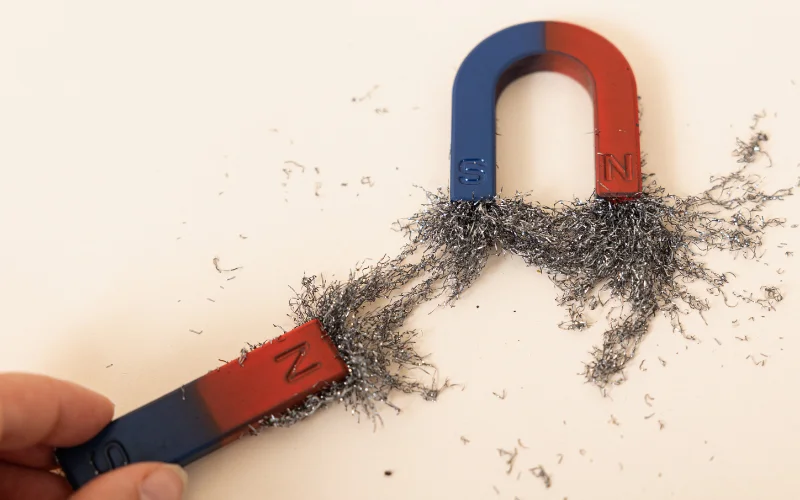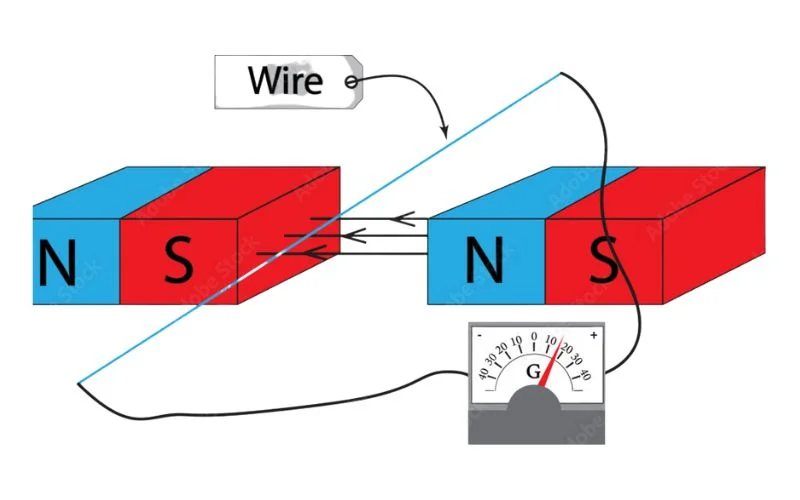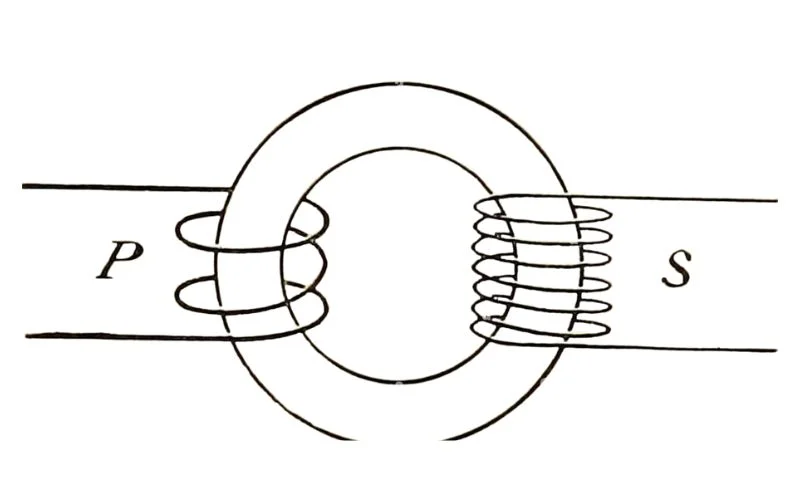
Amid the complex web of electromagnetic phenomena, a symphony of forces often goes unnoticed, but has a profound impact on modern technology. Welcome to the world of Resonant Echoes: Magnetic Revelations of Mutual EMF. This exploration explores the fascinating area of mutual electromagnetic force (EMF) and its resonance in magnetic circuits. Just as echoes carry the essence of sound, these resonant interactions contain the essence of energy transfer and communication, inviting us to discover the hidden harmonies that shape the technological landscape. Let's embark on a journey to uncover the secrets of this magnetic interaction and reveal the symphonic revelations that await us.
The Magnetic Partnership: Exploring Mutual Electromotive Forces

At the heart of the mutual electromotive force is a fascinating partnership between magnetic circuits. When a change in current flows through a circuit, it induces a magnetic field that affects its behavior and affects neighboring circuits. This wave effect creates a mutual electromotive force – a phenomenon in which the changing magnetic field of one circuit induces a voltage in another. This complex interaction forms the basis of countless devices, from transformers to generators.
Resonance: The echo effect

In the fascinating world of electromagnetic phenomena, few concepts have the appeal and importance of resonance – a fascinating spectacle that is crucial to understanding the behavior of mutual electromagnetic forces (EMF) in magnetic systems. Dive deeper into the heart of Resonance: The Echo Effect to discover the fascinating dance of forces and energy that unfolds in magnetic circles.
A harmonious dance of forces
Resonance is the remarkable phenomenon in which two or more systems synchronize their vibrations or oscillations, resulting in an amplified effect. With mutual electromotive force, resonance means the harmonic interaction between magnetic circuits, which leads to increased energy exchange. This phenomenon arises from the complex interaction between magnetic fields, currents and voltages, creating a dynamic balance that can amplify effects far beyond what could be expected.
Resonance in action
Imagine a scene with magnetic circuits in devices like transformers or wireless power transmission systems. As currents change within one revolution, they create a magnetic field that extends its influence to neighboring circuits. When the frequencies of these magnetic fields align in such a way that their effect is amplified, resonance occurs. This synchronized dance results in a cascade of impacts that increases energy transfer efficiency and improves overall system performance.
The power of harmonic vibration
The core of resonance lies in the concept of harmonic vibration – a rhythmic back and forth movement that reinforces itself through its alignment with natural frequencies. In the resonant state of mutual electromotive forces, magnetic fields and induced voltages oscillate harmoniously, allowing circuits to exchange energy and increase their collective potential. This principle is used in several technologies and promotes the efficient transmission of energy and information in a wide variety of applications.
Resonance as a design principle
Engineers and scientists use the power of resonance to develop and optimize devices that rely on mutual interactions of electromagnetic fields. By carefully tuning the frequencies and characteristics of circuits, they can create resonant conditions that maximize power transfer, minimize losses, and improve overall system performance. From medical imaging devices to wireless communications networks, resonance-powered technologies have revolutionized the way we interact with and use electromagnetic forces.
Applications and implications

The profound effects of mutual electromotive forces affect several areas. Transformers use mutual electromotive forces to increase or decrease voltage when distributing electricity, allowing efficient transmission over long distances. The world of wireless charging also owes its existence to mutual electromotive forces that allow devices to consume power without direct contact. Furthermore, mutual electromotive forces play a crucial role in electronic components, signal transmission, and even the function of electric motors.
Transformers and beyond
One of the most notable applications of mutual electromotive resonance is in transformers. These devices use mutual electromotive resonance to increase or decrease voltage levels, allowing efficient transmission of power over long distances. By matching the resonance between the primary and secondary coils, transformers ensure minimal power loss during transmission, making them the basis of power distribution systems.
Wireless charging and power transfer
Mutual EMF resonance has also revolutionized the way we charge devices. Wireless charging systems, like those used for smartphones and electric vehicles, are based on the resonant interaction between a transmitter and a receiving coil. When these coils share a resonant frequency, energy transfer becomes efficient and can occur without physical connections, opening the door to more convenient and user-friendly charging solutions.
Improved signal transmission
Antennas used to transmit and receive electromagnetic signals greatly benefit from the principles of mutual EMF resonance. Achieving resonance allows antennas to capture and emit signals more effectively. This technology is an integral part of wireless communication systems, including Wi-Fi, radio and cellular networks, enabling continuous connectivity over different distances.
Electromagnetic compatibility and interference reduction
In the ever-growing landscape of electronic devices, mutual EMF resonance can also be a double-edged sword. Accidental resonance may cause electromagnetic interference and disrupt the operation of nearby devices. Engineers strive to manage and control resonance to ensure compatibility and minimize interference. This highlights the importance of understanding and manipulating resonance in electronic designs.
Medical Imaging and Inductive Coupling
Medical imaging techniques such as magnetic resonance imaging (MRI) use mutual EMF resonance to visualize internal structures of the human body. MRI systems create detailed images without ionizing radiation by manipulating the resonance behavior of atomic nuclei in a magnetic field. Inductive coupling techniques based on mutual EMF resonance also enable wireless transmission of power and data in medical implants.
Emerging technologies
With technological progress, new frontiers are being explored. From resonant wireless power transfer for electrical transportation systems to resonant coupling for Internet of Things (IoT) devices, mutual EMF resonance is at the heart of many new technologies. These innovations continue to transform industries and pave the way for a more connected and efficient future.
Challenges and innovations

While mutual electromotive force offers many advantages, it also presents challenges that engineers and scientists are constantly working to overcome. Controlling and managing mutual electromotive force to avoid unwanted interference is crucial, especially in complex electronic systems. As technology advances, new ways to harness and manipulate mutual electromotive force are being discovered, leading to innovations that are redefining the way we think about energy transfer and information exchange.
Tame the wild vibes
One of the biggest challenges in using mutual EMF resonance is its control and control. Uncontrolled resonance can lead to undesirable effects such as overheating, interference or even system failure. Engineers and scientists are working tirelessly to develop systems that balance the amplifying benefits of resonance while preventing it from spiraling out of control. Techniques such as damping, active control and frequency tuning ensure that resonance remains a tool and not a hindrance.
Frequency diversity
In an increasingly wireless world, the challenge of frequency interference is becoming a paramount concern. Because many devices use mutual EMF resonance for various purposes, the risk of unintended resonance causing interference increases. Innovations in frequency diversity, where devices operate at different resonant frequencies, help reduce interference and ensure the smooth functioning of networked systems.
Miniaturization and integration
As technology develops, demand for smaller, better integrated devices increases. Due to limited space, achieving mutual EMF resonance in compact designs is particularly challenging. Innovations in miniaturization techniques, advanced materials and new circuit designs enable the integration of resonant components into smaller form factors, expanding applications from wearable devices to small medical device implants.
Efficient wireless power transfer
Although wireless charging systems benefit from mutual EMF resonance, optimizing their efficiency remains an ongoing challenge. Innovations in resonant coil design, adaptive tuning algorithms and efficient power management systems are driving the search for greater power transfer efficiency and longer transmission distances in wireless charging technologies.
Quantum Resonance
As technology approaches the realm of quantum mechanics, new challenges and opportunities arise. Quantum resonance, a phenomenon that occurs when the energy levels of quantum systems equalize, has the potential to revolutionize fields such as quantum computing and quantum communications. Navigating these uncharted waters requires innovative theoretical frameworks and experimental techniques to harness the power of mutual quantum resonance of electromagnetic fields.
Strength of mutually induced electromotive force


